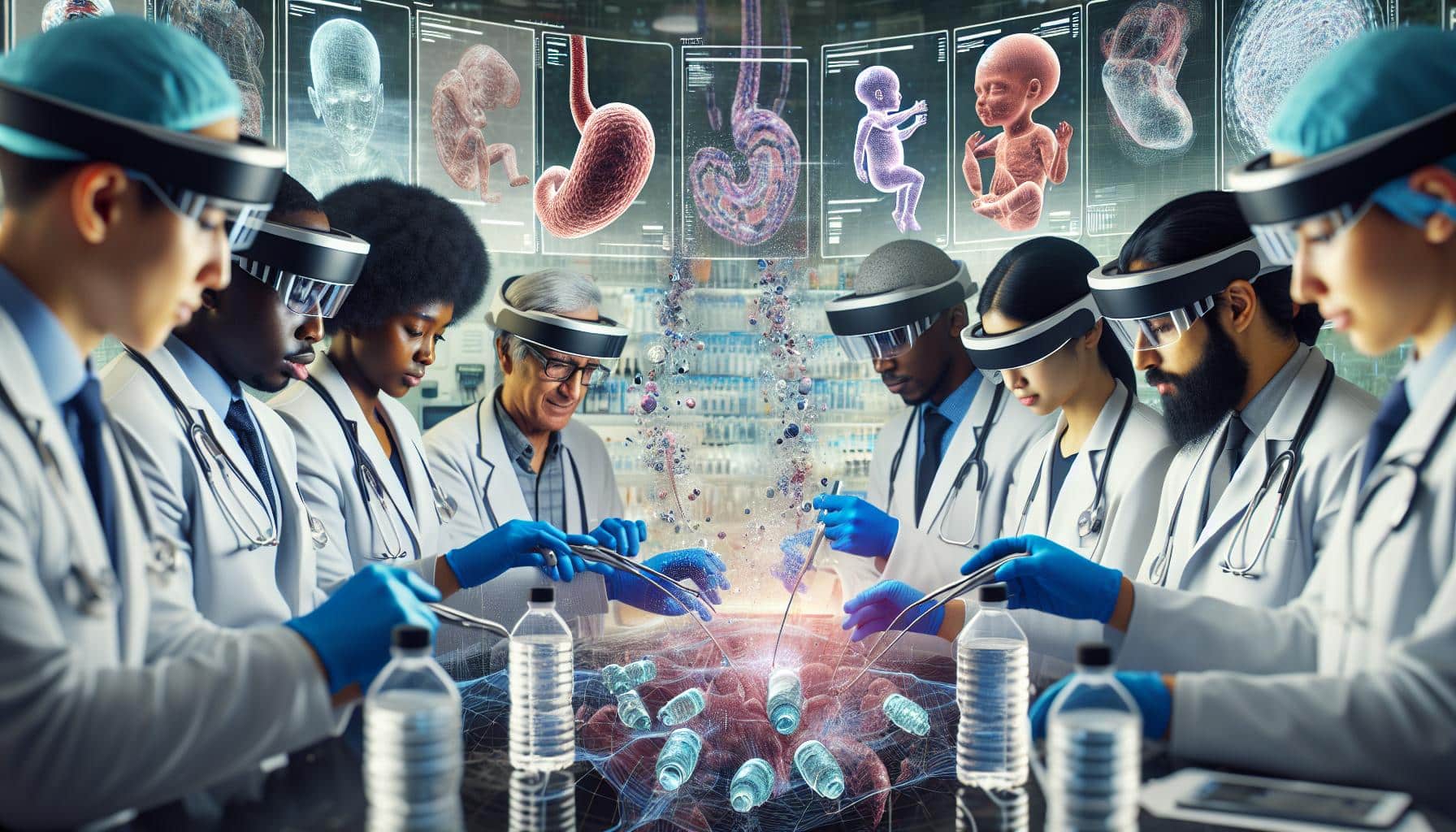The Alarming Discovery: An Average of 240,000 Nanoplastics per 1 Liter Bottle
A recent study has revealed shocking findings regarding the presence of nanoplastics in bottled water. Researchers found an average of 240,000 nanoplastics particles in each 1 liter bottle. This alarming discovery has raised concerns about the potential impact of nanoplastics on our health and the environment. But what exactly are nanoplastics and how do they affect us?
Nanoplastics are tiny pieces of plastic that measure less than 1 micrometer in size. They can be formed as a result of the breakdown of larger plastic pieces, or they can be intentionally manufactured for various purposes. These minuscule particles have been found to contaminate water sources, including rivers, lakes, and even tap water. The recent study focused specifically on the presence of nanoplastics in bottled water, shedding light on a previously unknown source of this pollution.
Understanding the Potential Health Effects of Nanoplastics
The presence of nanoplastics in our drinking water raises concerns about the potential health effects they might have on our bodies. While research in this area is still in its early stages, preliminary studies suggest that nanoplastics can have detrimental effects on our health.
One primary concern is the potential for nanoplastics to accumulate in our bodies over time. Due to their small size, these particles can easily pass through our digestive system and other barriers within the body, potentially reaching organs and tissues. Animal studies have shown that nanoplastics can cause inflammation, oxidative stress, and damage to the liver and other organs.
Furthermore, nanoplastics have been found to have the ability to absorb and release harmful chemicals. This means that if we consume nanoplastics-contaminated water, we might also be ingesting these chemicals, which can have adverse health effects. While more research is needed to fully understand the implications, the potential for nanoplastics to disrupt our hormonal balance and contribute to the development of diseases cannot be overlooked.
The Environmental Impact of Nanoplastics in Bottled Water
Apart from the potential health effects on humans, the presence of nanoplastics in bottled water also highlights the environmental impact of plastic pollution. Plastic waste has long been a global concern, with millions of tons of plastic ending up in our oceans and ecosystems each year. The discovery of nanoplastics in bottled water further emphasizes the magnitude of this problem.
Nanoplastics, being tiny and hard to filter out, can easily enter waterways and contaminate marine life. Fish and other aquatic organisms may mistakenly ingest these particles, leading to bioaccumulation within the food chain. This not only poses a threat to marine biodiversity but also has potential consequences for humans who consume seafood.
Furthermore, nanoplastics can persist in the environment for extended periods and contribute to the overall pollution load. Their small size enables them to be transported over long distances and enter ecosystems that were previously considered unaffected by plastic pollution. This underscores the urgent need for measures to reduce plastic waste and prevent further contamination of our natural environment.
What Can We Do to Reduce Nanoplastics in Our Environment?
As individuals, there are steps we can take to contribute to reducing nanoplastics pollution in our environment. Minimizing the use of single-use plastics, such as plastic water bottles, is a crucial first step. Opting for reusable alternatives and investing in water filters can significantly reduce our reliance on bottled water and help minimize plastic waste.
Additionally, supporting organizations and initiatives that work towards the prevention and cleanup of plastic pollution is essential. Advocacy for stricter regulations on plastic manufacturing and waste management is crucial to make a lasting impact on the reduction of nanoplastics in our environment.
In conclusion, the alarming discovery of an average of 240,000 nanoplastics per 1 liter bottle of water raises significant concerns about our health and the environment. While more research is needed to fully understand the extent of the risks, the presence of nanoplastics in our drinking water warrants attention and action. By being conscious consumers and actively supporting efforts to reduce plastic waste, we can contribute to making a positive change for our own well-being and the health of our planet.
Analyst comment
1. Negative news: The presence of an average of 240,000 nanoplastics particles in each 1 liter bottle raises concerns about the potential impact on our health and the environment.
Market prediction: The market for bottled water may experience a decline as consumers become more aware of nanoplastics contamination and seek alternative water sources.
2. Negative news: Preliminary studies suggest that nanoplastics can have detrimental effects on our health, including inflammation, oxidative stress, and damage to organs.
Market prediction: There may be a shift in consumer preferences towards filtered water or other alternatives, leading to a decline in the market for bottled water.
3. Negative news: The presence of nanoplastics in bottled water highlights the environmental impact of plastic pollution, posing threats to marine biodiversity and potentially impacting seafood consumers.
Market prediction: Demand for sustainable packaging solutions and eco-friendly products may increase, leading to a decline in the market for single-use plastic water bottles.
4. Positive news: Individuals can take steps to reduce nanoplastics pollution, such as minimizing the use of single-use plastics and supporting organizations working towards plastic waste prevention.
Market prediction: There may be increased demand for reusable water bottles, water filters, and products with eco-friendly packaging materials, leading to growth in the market for sustainable alternatives to plastic water bottles.













